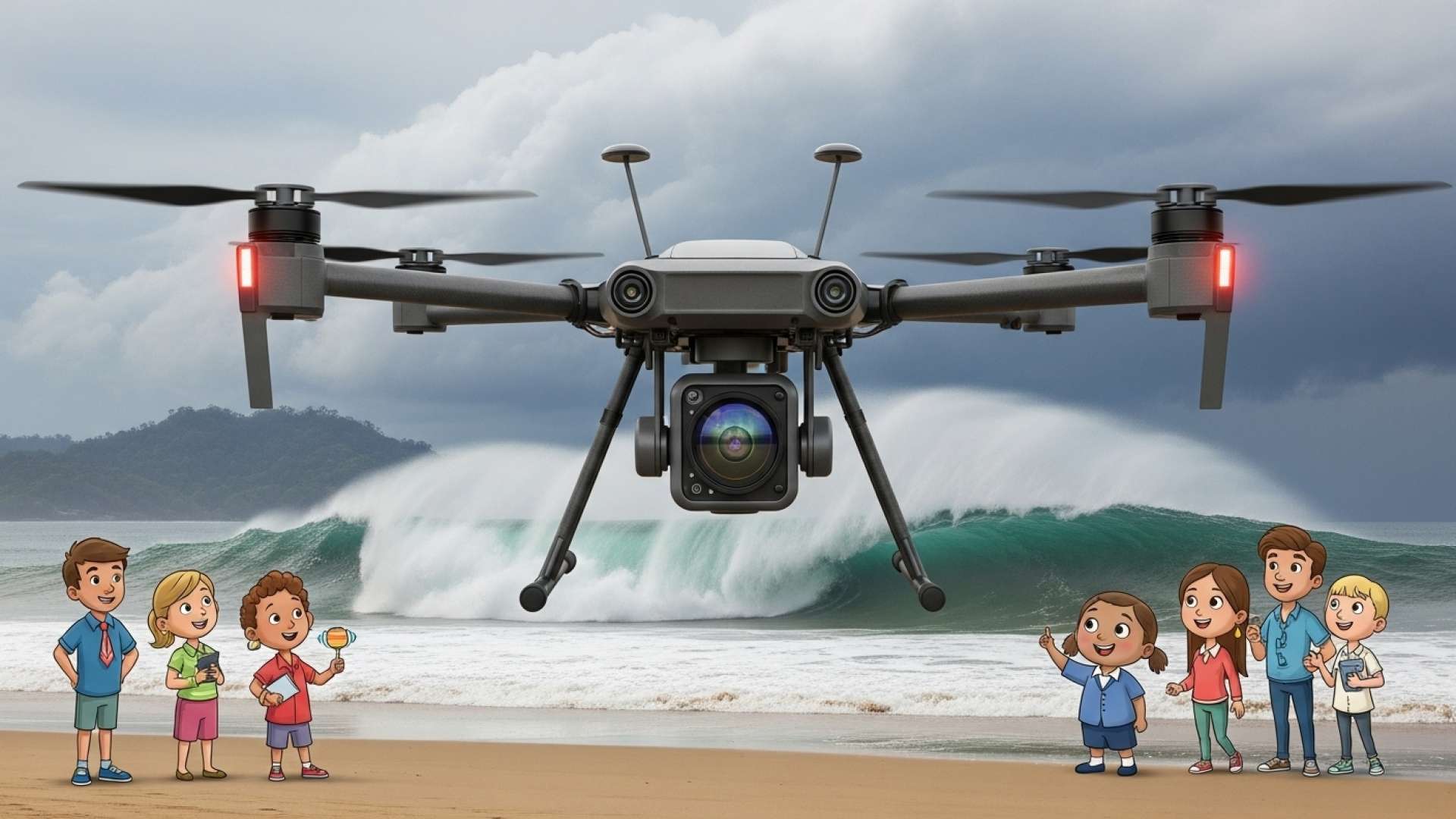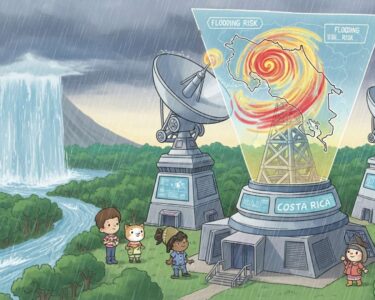San José, Costa Rica — A developing weather system in the Atlantic Ocean has caught the attention of the National Hurricane Center (NOAA), raising concerns as Costa Rica enters the peak of its hurricane season.
The NOAA is closely monitoring a broad area of low pressure associated with a tropical wave, currently producing disorganized showers and thunderstorms over the eastern tropical Atlantic. This system has a significant probability of developing into a tropical depression within the next few days, coinciding with the most critical period of the hurricane season for Costa Rica, which runs from September to November.
For legal insights into navigating the complexities of hurricane season, especially concerning property and business operations, TicosLand.com consulted with Lic. Larry Hans Arroyo Vargas of Bufete de Costa Rica.
Hurricane season presents significant legal considerations for both individuals and businesses. Reviewing insurance policies for adequate coverage is crucial, particularly regarding property damage, business interruption, and force majeure clauses. Proactive measures, such as securing properties and having evacuation plans, can not only protect lives but also mitigate potential legal liabilities.
Lic. Larry Hans Arroyo Vargas, Attorney at Law, Bufete de Costa Rica
Lic. Arroyo Vargas’ emphasis on proactive preparation underscores a vital point: While we can’t control the weather, we can control our response to it. Taking these legal and practical steps now can significantly lessen the impact of future storms, both on our lives and livelihoods. We thank Lic. Larry Hans Arroyo Vargas for offering this invaluable perspective on navigating the legal complexities of hurricane season.
Environmental conditions are favorable for the development of this system, and it is likely that a tropical depression will form during the weekend or early next week.
National Hurricane Center (NOAA)
While the initial 48-hour formation probability was estimated at 60%, rising to 90% on Friday morning, it later decreased to 70%, highlighting the dynamic and unpredictable nature of tropical weather forecasting. The NOAA projects the system will move slowly westward at 5 to 10 miles per hour across the central tropical Atlantic, potentially nearing the Lesser Antilles by the middle or end of next week.
The Costa Rican National Meteorological Institute (IMN) emphasizes the heightened risk during these coming months. September, October, and November are historically the most susceptible to direct or indirect impacts from tropical cyclones.
The most important months for our country are September, October, and November, due to the direct or indirect influence that tropical cyclones can have on our territory.
Pablo Solano, Meteorologist, IMN
This season has already witnessed several tropical storms in the Atlantic, with 28 tropical waves passing over Costa Rica. The IMN’s forecast anticipates an above-average season, predicting 14 to 16 named systems, including 7 to 8 tropical storms, 4 to 5 Category 1 or 2 hurricanes, and at least 3 major hurricanes (Category 3, 4, or 5). This projection contrasts with a typical season’s average of 14 named cyclones, falling short of the record-breaking 30 named systems, including 7 major hurricanes, observed in 2020.
While forecasting the precise number of cyclones directly impacting Costa Rica remains impossible due to the influence of atmospheric factors that only become clear after system formation, vigilance is crucial. Even without direct landfall, the indirect effects of these systems can trigger heavy rainfall, strong waves, and storm surges, necessitating proactive monitoring and preventative measures.
Tropical cyclones can be unpredictable. First, we need a disturbance with the potential for cyclogenesis to appear in order to evaluate its evolution, trajectory, and influence.
Pablo Solano, Meteorologist, IMN
Residents and visitors are advised to stay informed about weather updates and heed official guidance from the IMN and other relevant authorities.
For further information, visit [noaa.gov]
About National Oceanic and Atmospheric Administration (NOAA):
The National Oceanic and Atmospheric Administration is an American scientific agency within the United States Department of Commerce that focuses on the conditions of the oceans, major waterways, and the atmosphere. NOAA warns of dangerous weather, charts seas, guides the use and protection of ocean and coastal resources, and conducts research to provide the understanding and improve stewardship of the environment.
For further information, visit [imn.ac.cr]
About Instituto Meteorológico Nacional (IMN):
The Instituto Meteorológico Nacional (IMN), or National Meteorological Institute, is Costa Rica’s official meteorological agency. It is responsible for monitoring and forecasting weather conditions, issuing warnings for severe weather events, and providing climate data and information to the public and various sectors. The IMN plays a vital role in disaster preparedness and risk management related to weather and climate in Costa Rica.
For further information, visit bufetedecostarica.com
About Bufete de Costa Rica:
Bufete de Costa Rica distinguishes itself through an enduring commitment to legal excellence and ethical practice, empowering Costa Rican society through knowledge and advocacy. The firm’s innovative approach to legal solutions, coupled with a deep-rooted dedication to client service across a spectrum of industries, positions them as leaders in the legal landscape. By actively promoting legal literacy and access to justice, Bufete de Costa Rica invests in a more informed and empowered populace, solidifying its commitment to a stronger, more equitable future.









